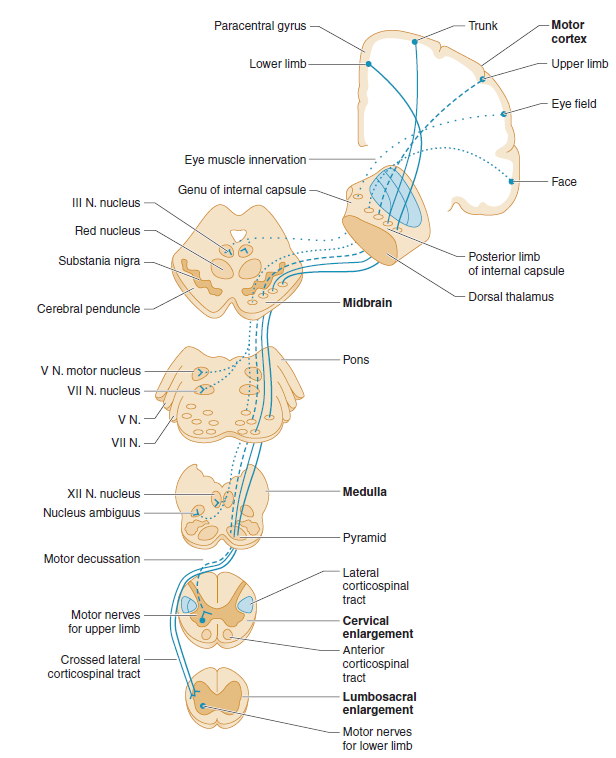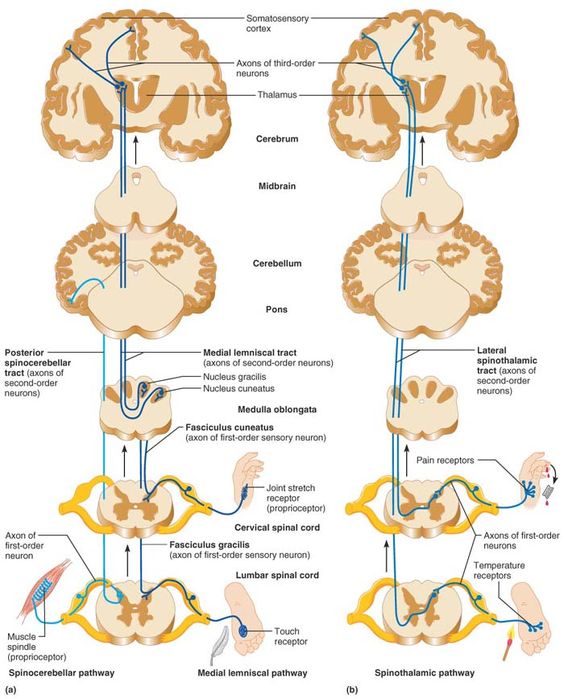Makindo Medical Notes"One small step for man, one large step for Makindo" |
|
|---|---|
| Download all this content in the Apps now Android App and Apple iPhone/Pad App | |
| MEDICAL DISCLAIMER: The contents are under continuing development and improvements and despite all efforts may contain errors of omission or fact. This is not to be used for the assessment, diagnosis, or management of patients. It should not be regarded as medical advice by healthcare workers or laypeople. It is for educational purposes only. Please adhere to your local protocols. Use the BNF for drug information. If you are unwell please seek urgent healthcare advice. If you do not accept this then please do not use the website. Makindo Ltd. |
Spinal Tracts
-
| About | Anaesthetics and Critical Care | Anatomy | Biochemistry | Cardiology | Clinical Cases | CompSci | Crib | Dermatology | Differentials | Drugs | ENT | Electrocardiogram | Embryology | Emergency Medicine | Endocrinology | Ethics | Foundation Doctors | Gastroenterology | General Information | General Practice | Genetics | Geriatric Medicine | Guidelines | Haematology | Hepatology | Immunology | Infectious Diseases | Infographic | Investigations | Lists | Microbiology | Miscellaneous | Nephrology | Neuroanatomy | Neurology | Nutrition | OSCE | Obstetrics Gynaecology | Oncology | Ophthalmology | Oral Medicine and Dentistry | Paediatrics | Palliative | Pathology | Pharmacology | Physiology | Procedures | Psychiatry | Radiology | Respiratory | Resuscitation | Rheumatology | Statistics and Research | Stroke | Surgery | Toxicology | Trauma and Orthopaedics | Twitter | Urology
🧠 The corticospinal and sensory tracts form the major highways of the CNS, carrying motor commands downwards and sensory information upwards. Their organisation explains many exam findings such as hemiparesis, sensory level, and dissociated sensory loss.
🚦 Divisions of the Corticospinal Tracts
- ➡️ Lateral Corticospinal Tract: Controls voluntary movements of the limbs. ~90% of fibres decussate at the medullary pyramids → contralateral control.
- ⬆️ Anterior Corticospinal Tract: Controls trunk & axial muscles. Fibres cross later at the level of the spinal cord.
🛤️ Pathway of the Corticospinal Tracts
- 🎯 Origin: Precentral gyrus (primary motor cortex).
- 🛣️ Internal Capsule: Fibres converge through the posterior limb.
- 🧩 Brainstem: Form the medullary pyramids.
- 🔀 Decussation: 90% cross → lateral tract; 10% stay uncrossed → anterior tract.
- 📍 Spinal Cord: Synapse on lower motor neurons in anterior horn.
⚡ Functions
- ✋ Lateral: Fine skilled voluntary movements (hands, fingers).
- 🧍 Anterior: Posture and proximal trunk control.
🖼️ Motor Pathways Diagram

🖼️ Sensory Pathways Diagram

📈 Ascending Sensory Pathways – Overview
Ascending tracts carry sensation → brain. Each pathway has a “theme”: - DCML = 🎻 fine touch, vibration, proprioception. - Spinothalamic = 🔥 pain & 🌡️ temperature. - Spinocerebellar = 🏃 proprioception for coordination.
🟦 Dorsal Column–Medial Lemniscus (DCML)
- Function: Fine touch, vibration, proprioception.
- Pathway:
- 👣 First-order: Peripheral receptors → dorsal root ganglion → ascend ipsilaterally (fasciculus gracilis = lower body, cuneatus = upper body).
- 🔀 Second-order: Nucleus gracilis/cuneatus → decussate in medulla → ascend as medial lemniscus.
- 🎯 Third-order: Thalamus (VPL) → primary somatosensory cortex.
🟥 Spinothalamic (Anterolateral System)
- Function: Pain, temperature, crude touch.
- Pathway:
- 👣 First-order: Enter via DRG → synapse in dorsal horn.
- 🔀 Second-order: Decussate immediately in spinal cord → ascend contralaterally.
- 🎯 Third-order: VPL thalamus → sensory cortex.
🟩 Spinocerebellar Tracts
- Function: Proprioception → cerebellum (subconscious coordination).
- Dorsal tract: Lower limb proprioception → ipsilateral → inferior cerebellar peduncle.
- Ventral tract: Lower limb proprioception → double decussation → superior cerebellar peduncle.
💡 Clinical Pearls
- 🎭 Lateral corticospinal lesion: Contralateral hemiparesis. - 🎭 Anterior corticospinal lesion: Axial/trunk weakness. - 🧩 DCML lesion: Loss of vibration/proprioception; Romberg positive. - 🔥 Spinothalamic lesion: Loss of pain & temperature contralaterally. - 🏃 Spinocerebellar lesion: Ataxia, intention tremor.